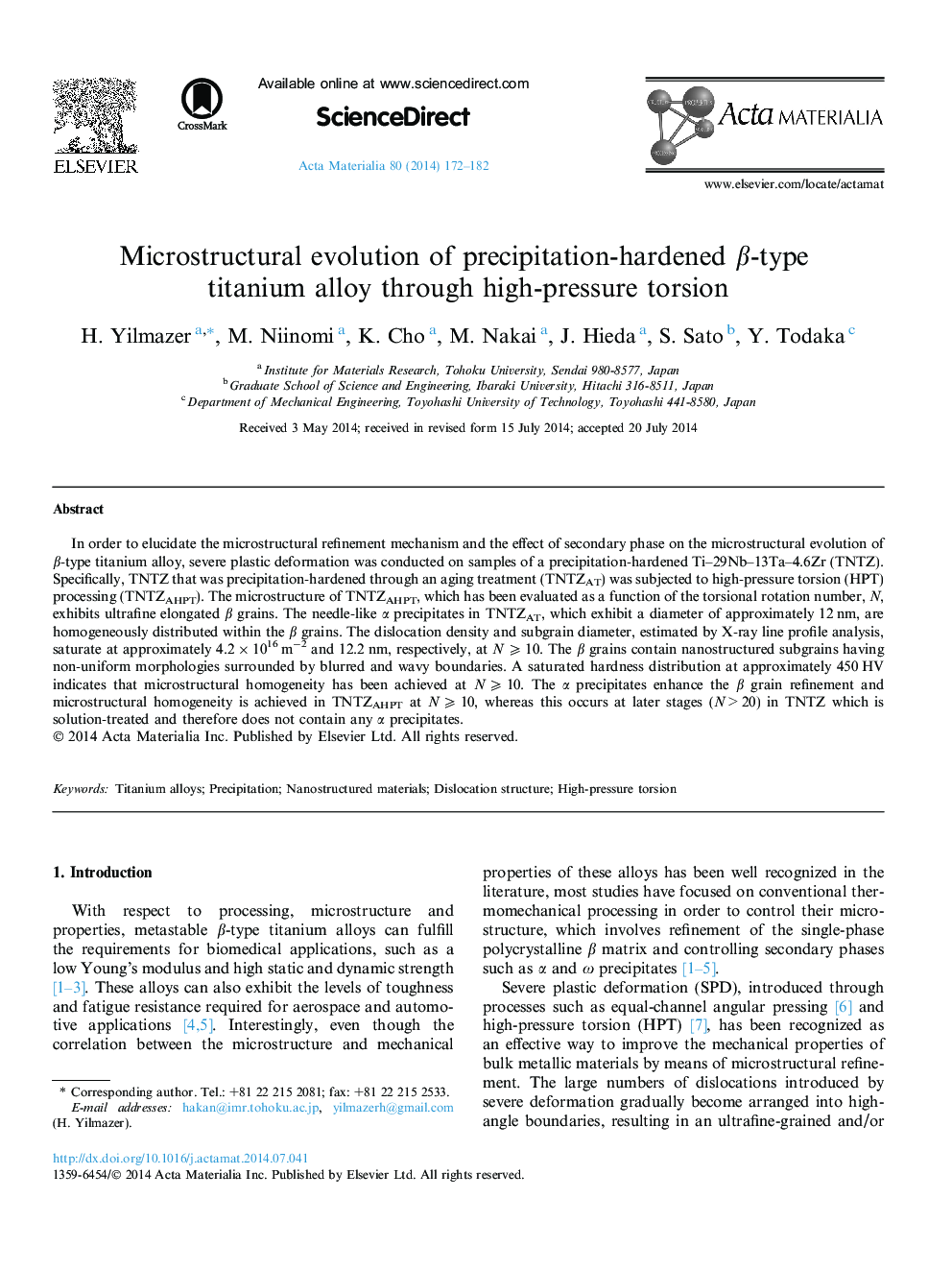| Article ID | Journal | Published Year | Pages | File Type |
|---|---|---|---|---|
| 7881075 | Acta Materialia | 2014 | 11 Pages |
Abstract
In order to elucidate the microstructural refinement mechanism and the effect of secondary phase on the microstructural evolution of β-type titanium alloy, severe plastic deformation was conducted on samples of a precipitation-hardened Ti-29Nb-13Ta-4.6Zr (TNTZ). Specifically, TNTZ that was precipitation-hardened through an aging treatment (TNTZAT) was subjected to high-pressure torsion (HPT) processing (TNTZAHPT). The microstructure of TNTZAHPT, which has been evaluated as a function of the torsional rotation number, N, exhibits ultrafine elongated β grains. The needle-like α precipitates in TNTZAT, which exhibit a diameter of approximately 12 nm, are homogeneously distributed within the β grains. The dislocation density and subgrain diameter, estimated by X-ray line profile analysis, saturate at approximately 4.2 Ã 1016 mâ2 and 12.2 nm, respectively, at N ⩾ 10. The β grains contain nanostructured subgrains having non-uniform morphologies surrounded by blurred and wavy boundaries. A saturated hardness distribution at approximately 450 HV indicates that microstructural homogeneity has been achieved at N ⩾ 10. The α precipitates enhance the β grain refinement and microstructural homogeneity is achieved in TNTZAHPT at N ⩾ 10, whereas this occurs at later stages (N > 20) in TNTZ which is solution-treated and therefore does not contain any α precipitates.
Keywords
Related Topics
Physical Sciences and Engineering
Materials Science
Ceramics and Composites
Authors
H. Yilmazer, M. Niinomi, K. Cho, M. Nakai, J. Hieda, S. Sato, Y. Todaka,
